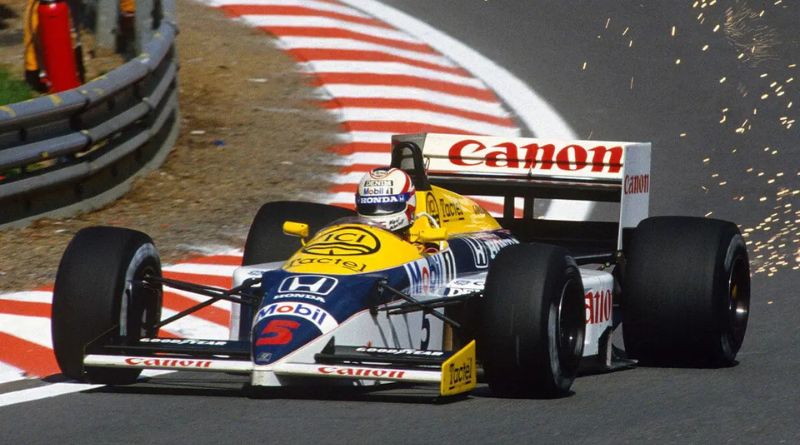Formula 1 (F1) has always been synonymous with speed, technology, and competition. The evolution of F1 cars over the decades reflects not only advancements in engineering and design but also changes in regulations, safety standards, and the relentless pursuit of performance. From the rudimentary machines of the early 1950s to the highly sophisticated hybrids of today, the story of F1 cars is one of innovation, passion, and evolution.
Table of Contents
1. The Early Years: 1950s-1960s
Formula 1 was officially established in 1950, and the cars of this era were simple by today’s standards. Early F1 cars were based on pre-war technology, featuring front-mounted engines and a focus on power rather than aerodynamics.
Key Features:
- Engines: Early models utilized large, naturally aspirated engines, often exceeding 4.5 liters. The Alfa Romeo 158, which dominated the early championships, is a prime example.
- Chassis: The chassis were primarily tubular steel frames, offering minimal protection for drivers.
- Aerodynamics: The aerodynamic design was rudimentary, with little consideration for airflow. The cars were heavy and boxy, but they laid the groundwork for future advancements.
Notable Cars:
- Alfa Romeo 158: This car won the inaugural F1 championship in 1950, featuring a powerful straight-8 engine and a lightweight design.
2. The Golden Age of Innovation: 1960s-1980s
As the sport progressed, the late 1960s to the 1980s saw significant advancements in technology and design. This period is often referred to as the “golden age” of Formula 1.
Key Innovations:
- Rear-Mounted Engines: Introduced by Ferrari in the 1961 season, this innovation allowed for better weight distribution and improved handling.
- Aerodynamic Wings: The addition of front and rear wings in the late 1960s dramatically increased downforce, allowing cars to corner faster.
- Monocoque Chassis: The introduction of the monocoque chassis, which utilized the car’s body for structural integrity, provided improved safety and rigidity.
Notable Cars:
- Lotus 49: This car featured a rear-mounted engine and was one of the first to utilize a monocoque chassis, revolutionizing car design.
- McLaren MP4/4: Driven by Ayrton Senna in 1988, this car won 15 of 16 races in its season, showcasing the power of turbocharged engines and aerodynamic efficiency.
3. The Turbo Era and Technological Advancements: 1980s-1990s
The 1980s marked the arrival of turbocharged engines, which dramatically changed the landscape of F1 racing. These engines allowed teams to extract incredible horsepower from smaller displacement engines, but they also posed significant challenges regarding reliability and handling.
Key Features:
- Turbocharged Engines: Cars like the McLaren MP4/4 utilized turbo engines that could produce over 1,000 horsepower in qualifying, pushing the limits of speed.
- Advanced Materials: The introduction of carbon fiber and other composite materials began to shape the construction of F1 cars, allowing for lighter and stronger designs.
Notable Cars:
- Williams FW14B: This car introduced active suspension, which adjusted the car’s height during a race to optimize aerodynamics and handling, showcasing the cutting-edge technology of the time.
4. The Modern Era: 2000s-2010s
The 2000s saw a shift towards naturally aspirated engines as the FIA implemented regulations to reduce costs and improve safety. The emphasis on aerodynamics and driver skill became even more pronounced.
Key Changes:
- Regulatory Changes: Restrictions on engine capacity and the banning of certain technologies like traction control reshaped how teams approached car design.
- Hybrid Technology: By the late 2000s, teams began to experiment with hybrid power units, leading to a focus on energy recovery and efficiency.
Notable Cars:
- Ferrari F2004: Known for its speed and reliability, this car dominated the 2004 season, winning 15 out of 18 races.
- Mercedes W05: This car marked the beginning of the hybrid era in 2014 and set new standards for performance and efficiency.
5. The Hybrid Era: 2014-Present
The introduction of hybrid power units in 2014 marked a significant shift in Formula 1 technology. The new regulations aimed to enhance fuel efficiency while maintaining high performance.
Key Features:
- Hybrid Power Units: Modern F1 cars utilize 1.6-liter turbocharged V6 engines paired with electric motors to improve power delivery and efficiency. These hybrid systems recover energy from braking and exhaust heat.
- Aerodynamic Regulations: Recent changes have focused on reducing turbulence and improving overtaking, leading to innovations in wing design and body shape.
Notable Cars:
- Mercedes W11: Dominating the 2020 season, this car showcased the power and efficiency of hybrid technology, securing the Constructors’ Championship.
6. Future Trends: What Lies Ahead
As technology continues to advance, the future of F1 cars will likely focus on sustainability, increased automation, and further innovation in materials and aerodynamics. The sport aims to become carbon neutral by 2030, with plans to introduce 100% sustainable fuels and electric power in the coming years.
Expected Innovations:
- Sustainable Fuels: F1 is working on developing synthetic fuels to reduce its carbon footprint.
- Electric Assistance: The integration of more electric components in hybrid power units may lead to enhanced performance and efficiency.
- Autonomous Technology: While F1 cars will always require human drivers, technology that aids in safety and performance will likely continue to evolve.
FAQs on F1 Car Evolution
1. What was the first F1 car?
The first official F1 car is considered to be the Alfa Romeo 158, which won the inaugural World Championship in 1950.
2. When did F1 cars start using rear-mounted engines?
Rear-mounted engines were first introduced in the 1961 season by Ferrari, significantly improving handling and weight distribution.
3. What is a monocoque chassis?
A monocoque chassis is a design where the car’s body acts as a structural component, providing increased rigidity and safety compared to traditional tube-frame designs.
4. How has aerodynamics changed in F1 cars?
Aerodynamics have become increasingly important over the decades, with innovations like wings and ground effects that improve downforce and handling. Modern regulations also focus on reducing turbulence to facilitate better overtaking.
5. What are hybrid power units?
Hybrid power units in F1 cars combine traditional internal combustion engines with electric motors. They recover energy from braking and exhaust heat, improving overall efficiency and performance.
6. What can we expect from the future of F1 cars?
The future of F1 cars is likely to include sustainable fuels, more electric assistance, and continued advancements in aerodynamics and safety technology, as the sport aims to reduce its environmental impact.
In conclusion, the evolution of F1 cars is a testament to human ingenuity and the relentless pursuit of speed and performance. Each era has brought its unique challenges and innovations, shaping the cars we see today and paving the way for future advancements in the world of motorsport. As technology continues to evolve, Formula 1 will remain at the forefront, constantly pushing the boundaries of what is possible in automotive engineering.



